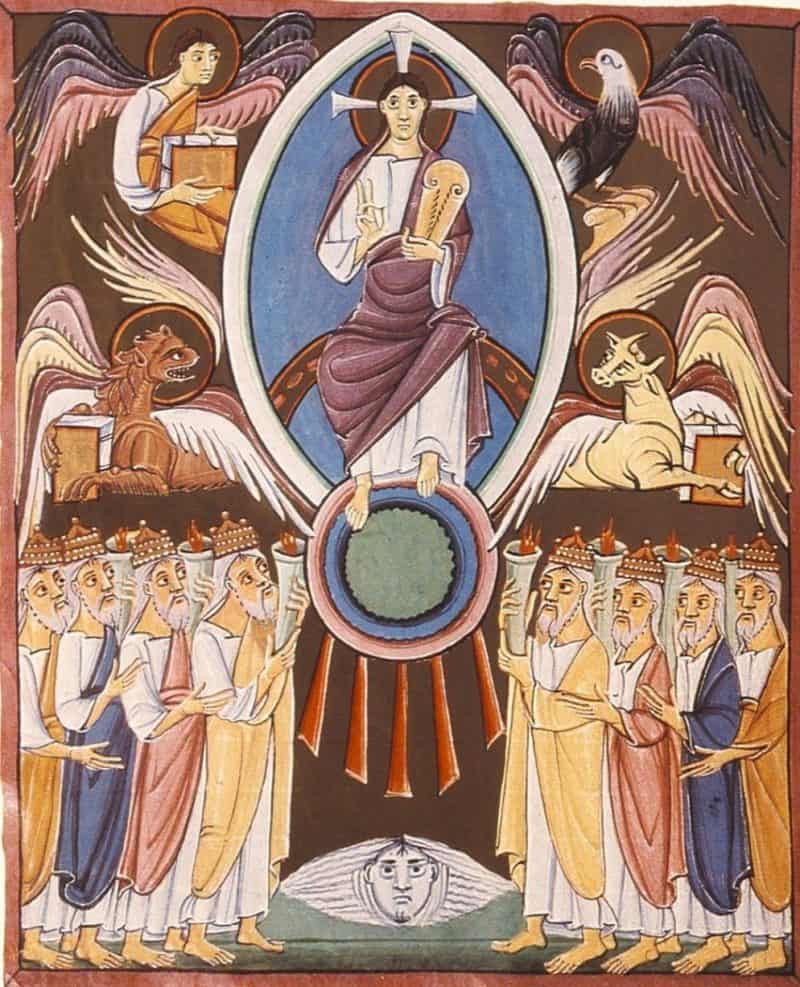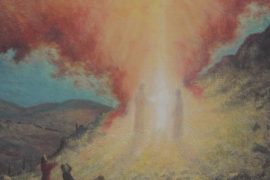In my previous post, “Have I Not Seen the Lord? What Did Paul Claim to Have Seen?” I suggest that we need to go to Paul, and what he says in 1 Corinthians 15:1-8, as our earliest witness to faith in Jesus’ resurrection–rather than to our latest witnesses–the gospels of Luke and John–who focus on a series of “flesh and blood” bodily “appearances.” Now even the most ardent orthodox or evangelical interpreters agree that Paul is our earliest witness to Jesus’ resurrection. Indeed, they often make a very big deal of it–arguing that he was either lying, deceived, or telling the truth–and concluding that given his primary first person evidence, we can “prove” Jesus’ resurrection as a historical fact.
What they don’t emphasize, however, is what Paul implies about his “seeing” Jesus, and the ways in which he links the future glorification of those “in Christ” at the Parousia (i.e. Arrival or 2nd Coming), who receive transformed immortal “spiritual” bodies–with Jesus’ glorious body (Philippians 3:20-21; 1 Corinthians 15:42-54). I argued in the post above that since Paul equates his “seeing of Jesus” with the experiences of those who were before him–namely Peter, James, and the other apostles and disciples, that we should allow his descriptions of the “risen Christ” in his glorified new body to shape our understanding of the earliest view of Jesus’ resurrection.
Paul has no idea of some kind of a two stage resurrection: a revived flesh and blood body, followed by a transformed glorious body sometime later. Paul is absolutely clear about that–he says Jesus, by his resurrection from the dead–was transformed (literally “metamorphosized”) from flesh to “life-giving spirit” (Romans 1:4; 1 Corinthians 15:20). His is the “first fruits” or “firstborn” from the dead–which is has nothing to do with the kind of corpse revival we have in Matthew 52-53).
The Hebrew and Greek terms for “resurrection” mean either to “make live” or to “stand up.” The words themselves say nothing about the nature of the body that emerges from Sheol or Hades. Remember, even the “sea” gives up its “dead” at the last judgment (Revelations 20:13). The physical bodies of the dead are “weak, perishable, corruptible,” long ago turned to dust, ashes,–and fish food! Paul’s view of resurrection of the dead has nothing to do with corpses–rotting or long perished. It is about transformation–after a “naked” state, to a new glorified body.

So the operative question for Paul–and his Corinthians skeptics regarding the resurrection–is a simple one–in what kind of body do they come forth from the dead? (1 Corinthians 15:35).
And it is there that Paul tells us clearly he has no idea. Yet he claims to have seen the risen Christ–and he knows one things–they will come forth with a body just like that of Christ when he was raised! He can characterize it–as glorious, powerful, imperishable, and spiritual–but he can not give you a visual picture!
So that was my question–what did Paul claim to have seen. And I suggested that rather than dismissing the accounts in the book of Acts, we consider that they might not be far from what Paul claimed–a kind of blinding vision of light, brighter than the sun, with an intimate voice of recognition: “I am Jesus whom you are persecuting.”
This week a fellow blogger Alex Finkelson and I were exchanging some emails. His blog, Scribes of the Kingdom, is one I highly recommend–along with Bart Ehrman’s blog…and a few others. I urge you to check it out. Alex is sharp, bold, always insightful, and I never fail to read what he writes. Anyway, Alex reminded me that we do have another “first person” eyewitness account of the “risen Jesus” in the New Testament–and that is that of “John,” author of the book of Revelation!
I can’t believe I left him out, as I wrote my first book on Pauls’s visionary experience–Things Unutterable: Paul’s Ascent to Paradise—now out of print–and I discuss that idea in the book. The problem is we know who Paul is but we don’t really know “which John” might be the author of Revelation. I recommend Richard Bauckham’s work on that question, but it seems unlikely it is John of Zebedee, the fisherman, more likely “John the Elder,” of Asia.
But be that as it may–this “John” does say he saw the risen Christ–and here is his description:
12 Then I turned to see the voice that was speaking to me, and on turning I saw seven golden lampstands, 13 and in the midst of the lampstands one like a son of man, clothed with a long robe and with a golden girdle round his breast; 14 his head and his hair were white as white wool, white as snow; his eyes were like a flame of fire, 15 his feet were like burnished bronze, refined as in a furnace, and his voice was like the sound of many waters; 16 in his right hand he held seven stars, from his mouth issued a sharp two-edged sword, and his face was like the sun shining in full strength (Revelation 1:12-16).
Notice, the figure he sees is “human-like” one one level–one “like a son of man,” but otherwise his appearance is precisely as Paul reports–reflecting a glory and splendor beyond anything imaginable. This sort of “epiphany” is very similar to the ones reported in our various “ascent to heaven” texts from the Hellenistic period. It reminds one of the description of the “Ancient of days” in Daniel 7:9, or the vision of the man clothed in linen in Daniel 10:5-6. a text upon which much of the book of Revelation is modeled. Whether the author “John,” in fact, had such an experience, or this text is simply reflective of a common literary type, makes little difference, since cultural expectations obviously shape and influence visionary images.
In my book, Things Unutterable, based on my dissertation directed by Jonathan Z. Smith, I explore these questions. Time and time again, we get this same patterned description of the glory surrounding the throne of the highest Deity–and this holds true for Jewish as well as non-Jewish reports of ascent through the heavens. There is a convenient survey of “Ascent to Heaven,” texts, a version of which is now published in the Anchor Bible Dictionary, on my blog here: “If I Ascend to Heaven–Paul’s Journey to Paradise.” If you are interested in a revised reprint of my book, see here for details.









Comments are closed.